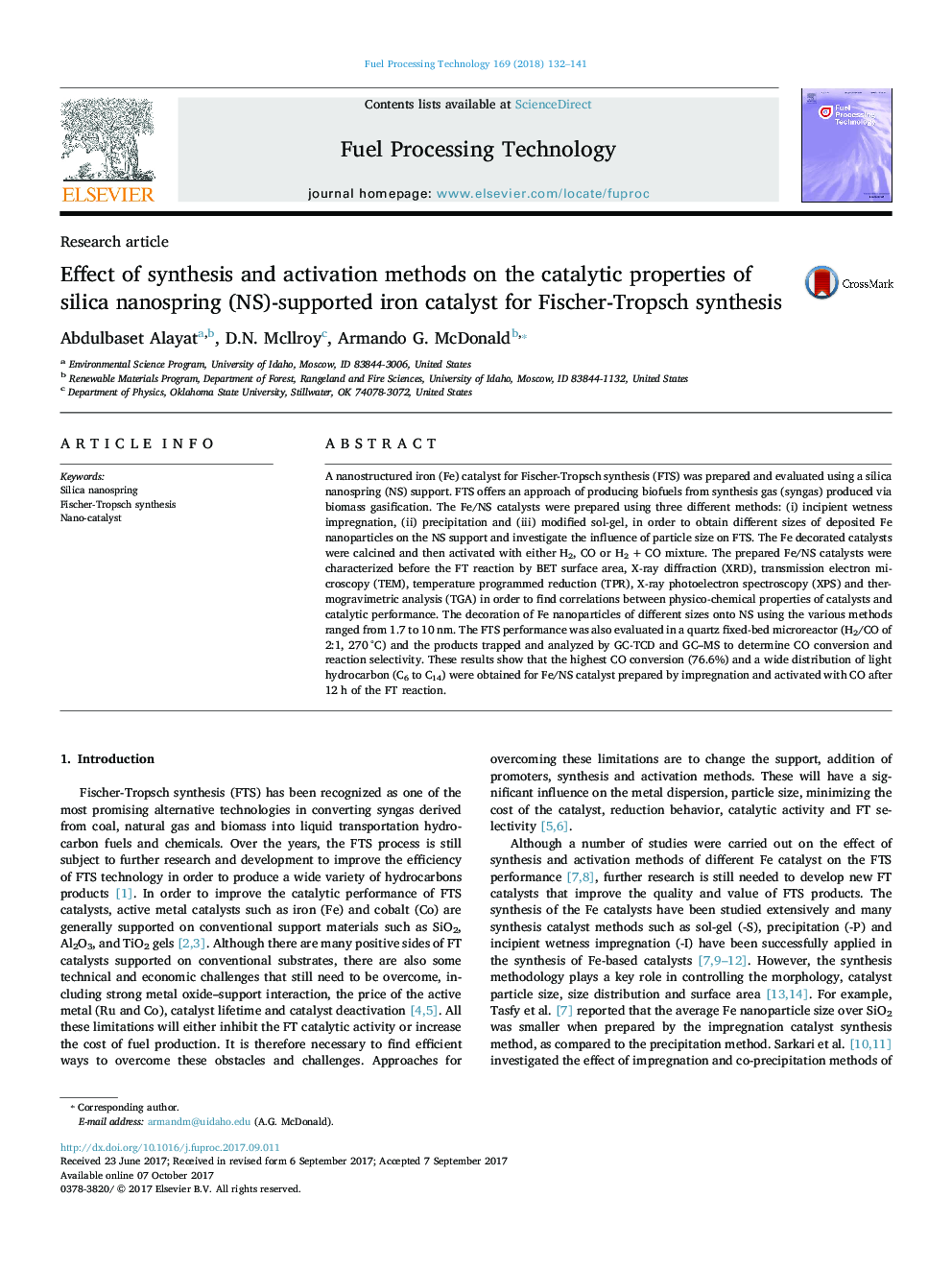| کد مقاله | کد نشریه | سال انتشار | مقاله انگلیسی | نسخه تمام متن |
|---|---|---|---|---|
| 4914325 | 1425377 | 2018 | 10 صفحه PDF | دانلود رایگان |
- Nanostructured Fe on silica nanospring support were prepared as a Fischer-Tropsch (FT) catalyst.
- Method of Fe deposition influenced Fe particle size (1.7-10Â nm) and FT performance.
- Three catalyst activation agents (H2, CO and H2Â +Â CO) were evaluated for the FT reaction.
- Highest FTS conversion was achieved by impregnation method and activation with CO.
A nanostructured iron (Fe) catalyst for Fischer-Tropsch synthesis (FTS) was prepared and evaluated using a silica nanospring (NS) support. FTS offers an approach of producing biofuels from synthesis gas (syngas) produced via biomass gasification. The Fe/NS catalysts were prepared using three different methods: (i) incipient wetness impregnation, (ii) precipitation and (iii) modified sol-gel, in order to obtain different sizes of deposited Fe nanoparticles on the NS support and investigate the influence of particle size on FTS. The Fe decorated catalysts were calcined and then activated with either H2, CO or H2 + CO mixture. The prepared Fe/NS catalysts were characterized before the FT reaction by BET surface area, X-ray diffraction (XRD), transmission electron microscopy (TEM), temperature programmed reduction (TPR), X-ray photoelectron spectroscopy (XPS) and thermogravimetric analysis (TGA) in order to find correlations between physico-chemical properties of catalysts and catalytic performance. The decoration of Fe nanoparticles of different sizes onto NS using the various methods ranged from 1.7 to 10 nm. The FTS performance was also evaluated in a quartz fixed-bed microreactor (H2/CO of 2:1, 270 °C) and the products trapped and analyzed by GC-TCD and GC-MS to determine CO conversion and reaction selectivity. These results show that the highest CO conversion (76.6%) and a wide distribution of light hydrocarbon (C6 to C14) were obtained for Fe/NS catalyst prepared by impregnation and activated with CO after 12 h of the FT reaction.
134
Journal: Fuel Processing Technology - Volume 169, January 2018, Pages 132-141
